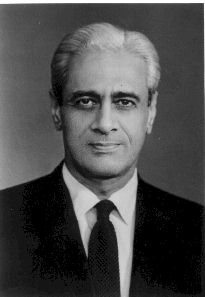This article needs additional citations for verification. (December 2019) |
Satish Dhawan | |
|---|---|
 | |
| Born | 25 September 1920 |
| Died | 3 January 2002 (aged 81) |
| Alma mater | |
| Known for | Indian space programme |
| Awards | Padma Bhushan(1971) Padma Vibhushan(1981) |
| Scientific career | |
| Fields | Mechanical and aerospace Engineering |
| Institutions | Indian Space Research Organisation Indian Institute of Science California Institute of Technology National Aerospace Laboratories |
| Thesis | Direct Measurements of Skin Friction (1951) |
| Doctoral advisor | Hans W. Liepmann |
| Signature | |
 | |
Satish Dhawan | |
|---|---|
| Chairman, ISRO | |
| In office 1972–1984 | |
| Preceded by | M. G. K. Menon |
| Succeeded by | Udupi Ramachandra Rao |
Satish Dhawan (25 September 1920 – 3 January 2002) was an Indian mathematician and aerospace engineer, widely regarded as the father of experimental fluid dynamics research in India. Born in Srinagar, Dhawan was educated in India and further on in United States. Dhawan was one of the most eminent researchers in the field of turbulence and boundary layers, leading the successful and indigenous development of the Indian space programme. He succeeded M. G. K. Menon, as the third chairman of the Indian Space Research Organisation (ISRO) in 1972. The second launch pad of ISRO, Satish Dhawan space centre is named after him. He is greatly regarded as the man behind A. P. J. Abdul Kalam.[citation needed]